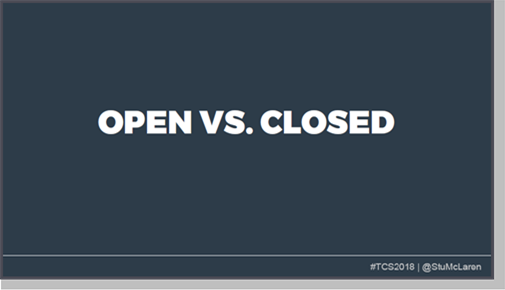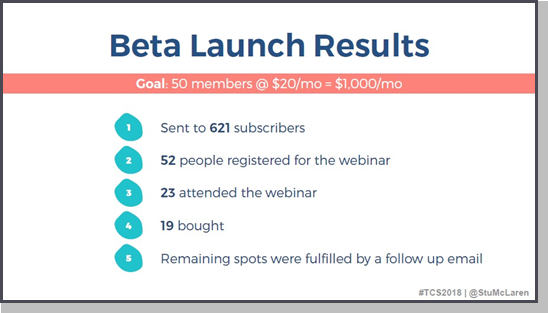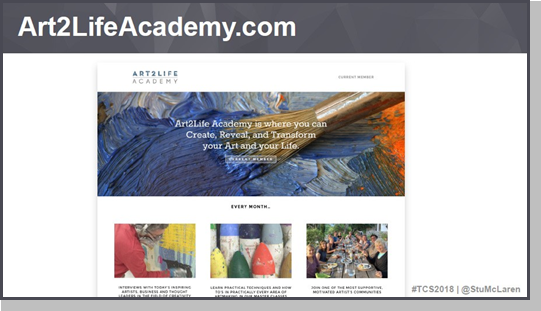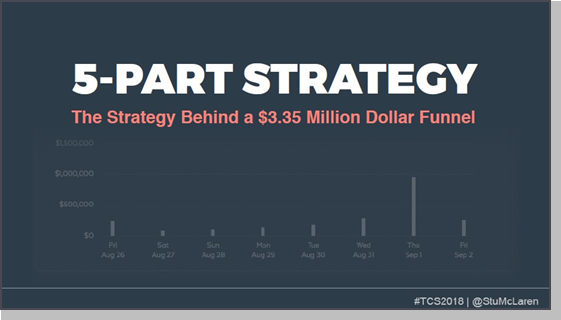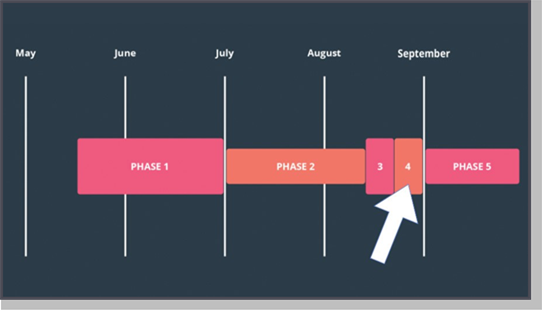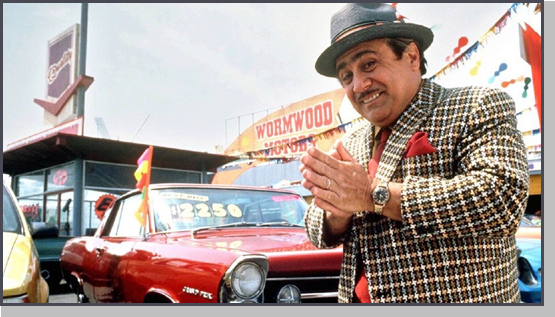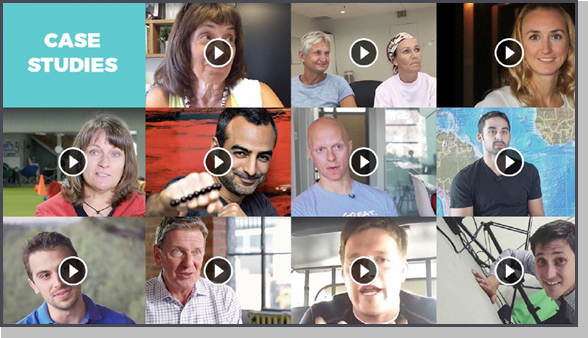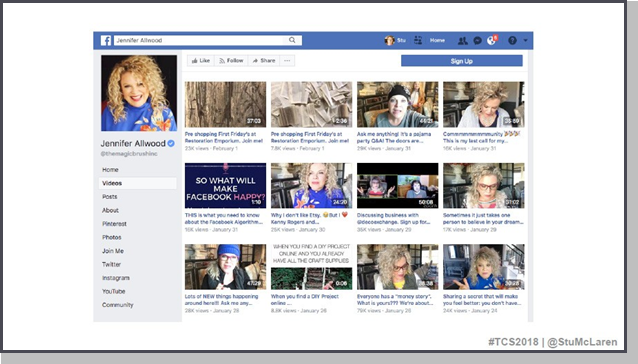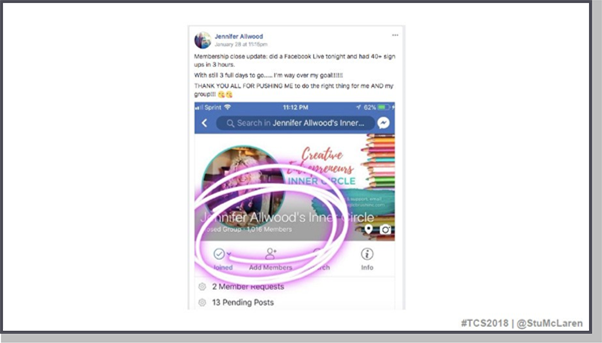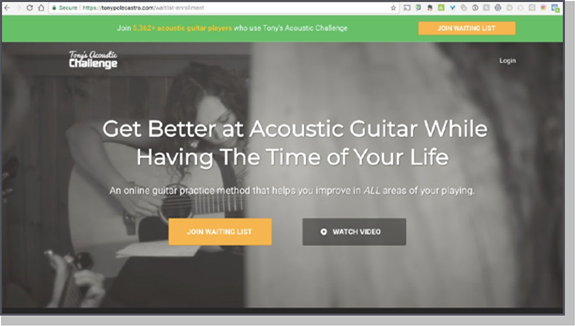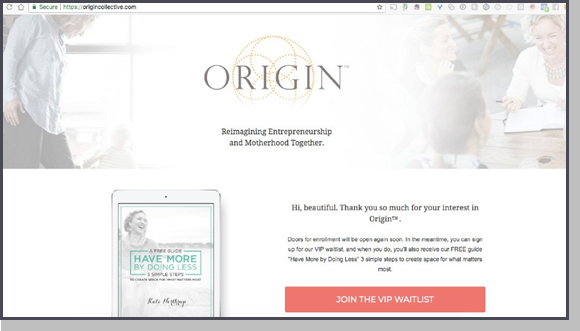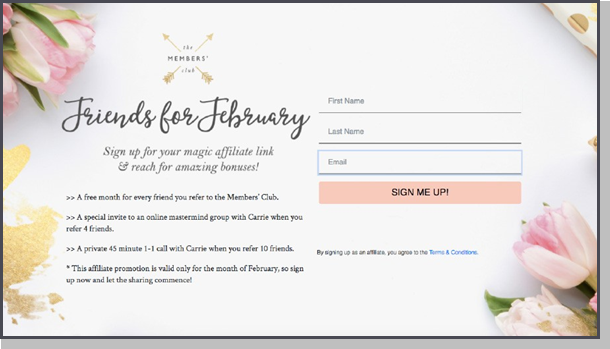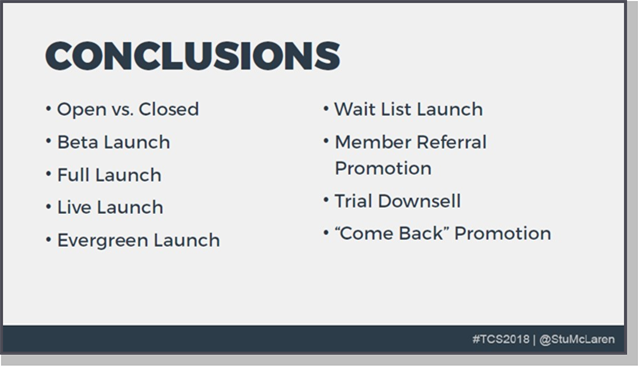Stu McLaren
Stu McLaren coaches and consults New York Times best-selling authors, top rated speakers, experts and niche celebrities on how to launch, grow and scale high profit recurring revenue streams. Founder of the world’s #1 membership platform for WordPress, WishList Member, he has served and support over 60,000+ online communities and membership sites.
Today we’re going to be talking about membership sites and specifically we’re going to walk through a whole bunch of acquisition strategies.
How many of you remember a date when your business changed forever because of one particular event? Can anybody nail that? I can tell you April 17, 2011, my views on business changed forever. That was the date that my little snuggle bum was born. And, I don’t know, how many parents?
So, I have 2 young kids. I have a daughter, Marla; she is now 6. And I have a young son, Sam, who we adopted, who just turned 4. And before I had kids, I thought, “I got parenting, you know; parenting is no problem. I don’t need a ‘strategy’ for parenting. I just gotta be a good dad.”
Well, in the first week, I discovered that you need a strategy for parenting. The reason I share that with you is because parenting, much like business, and particularly membership sites; are not going to go well unless you have a great strategy.
When I put together Tribe, I created a Membership Site Blueprint and we are be going through a big chunk of this blueprint. But here’s the good news.
I’m going to give you this whole blueprint when we’re finished.
Here’s the thing, it’s all about strategy. The membership sites that succeed online, they have good strategy. The ones that don’t haven’t thought about their strategy whatsoever. And really with membership sites, it’s like the yin and the yang. There are really two big areas that you’ve got to focus on.
Number 1 is getting new members; and number 2 is keeping members.
Now, I’ll tell you, the real success with membership sites boils down to your ability to do both of these things equally well. The problem is that most membership site owners only focus on one area. Can you guess what that one area is? Getting new members. The reason I bring that up is because the only warning sign in the danger point of today’s presentation is that we’re going to be focusing on getting new members.
But I do not want you to lose sight of the fact that a successful membership site is equal in two parts. So, my goal here is pretty simple. I want to help you get paid every single month. I love membership sites. Because with membership sites, you find a customer, you take care of that customer and that customer will pay every single month.
As long as you keep them happy, they’ll keep you happy. It’s like this beautiful marriage in business. And the more money you make, the more impact you can have. It’s a beautiful, beautiful thing. So, what makes this presentation different? Well, it’s not based on just theory. This is based on being on the ground, sleeves rolled up, doing this thing for over a decade.
As the co-founder of Wishlist Member, I saw behind the scenes of tens of thousands of membership sites; and over that time, I saw that there were a lot of sites doing a lot of things wrong, struggling to grow their memberships. But there was a few that were doing things completely differently. There were a few that were not only thriving, but these sites were growing like crazy. And, so that’s what I doubled down my attention on.
What were they doing differently that these other sites were not?
When I sold my interest in Wishlist in 2014, I decided to take everything that I had learned and apply it, and I’m going to share that with you in a minute. But, as I said, this is based on tens of thousands of membership sites. There are two types of membership site owners that I discovered.
One is what I call the hobbyist. They would launch a site. They would get excited, they’d launch it, it would do well initially and then it would either flat- line or it would completely die.
The other was the business owner. They saw a growth curve that looked like a stair step. They’d see a huge spike, they’d hold steady; see another huge spike, hold steady. Another huge spike, hold steady. And this is what we’re going to talk about today.
So, I took all those things that I learned from that small group and I applied it. I partnered with New York Times best-selling author Michael Hyatt, we launched a brand-new site called Platform University. In week 1, we had 11 hundred members. After the first year, we had 25 hundred. After the second year, we had 45 hundred. After the third year, we had 6 thousand. Soon after that, a lot of people started asking, how are you doing this? And that’s when I started sharing and that’s what we’re going to go through.
Now, as we go through it, I want to talk about something that’s very important and somewhat controversial in the membership space. There are 2 big over-arching marketing strategies you need to be aware of as it relates to membership sites.
Two Types of Membership Sites
There’s the open-marketing plan, which means that you’re open all the time. People can sign up to your membership site 24/7. Then there’s the closed- marketing plan; which is you’re only open for a certain number of days a year. Now, some of you may be thinking, “Stu, dude, have you gone off your rocker here? Why would you close a membership? Wouldn’t you want a funnel that constantly sends people into that membership?” This is where those real world, in the trenches lessons come from.
When we launched Platform University, we were open all the time. Does anybody own a membership site? Okay, so you guys know, if you don’t have a reason for people to join your membership site today, guess what’s going to happen? They’re going to save it. They’re going to go, “Oh, this looks great! I’m going to save this for later.” Later is the kiss of death for all of us.
So, when we had an open-marketing plan, I knew this. So, one of the things that I would do is, every single month, we had a brand-new promotion. A brand-new reason why somebody would join.
Now here’s just the quick little skinny on this, if you have an open-marketing plan. Create a new bonus that’s only available that month. Build a promotion around that bonus and have a deadline by which people need to register in order to get that bonus. And what we would do is we would create 12 of those bonuses. One each month. And then the following year, guess what we would do? We would recycle those promotions and use the same bonuses in the next month. Okay. So when we did that with Platform University, we would average anywhere between 75 to 125 new members per month.
Now, here’s the crazy thing. When we went to a closed model, I was scared out of my mind to do this. “I was like, I don’t know if we should really do this.” We were going to go down to 4 promotions per year. I was like, “I don’t know if we can make up the number of members in each of those 4 promotions.” We tried it anyway.
The first time that we did it, we added 600 new members. And I was thinking, maybe that’s just a fluke. That was like more than double what we would normally get. So, then we tried it again, and it went up to 800 members. And when we had 4 promotions a year, we would average anywhere between 600 to 800 new members during those promotions; which was more than double what we would have gotten over the course of the same period of time.
Then we had another crazy idea. We said what if we go from 4 down to 2? The same fear kicked in. I thought, “Aaah! I don’t know, that’s a much longer period of time that we gotta make up sales.” Here’s what happened. In the quarterly promotions, we would average 6 to 8 hundred new members; in the, what is it, bi-annual semi-annual; I never know. Twice a year in those promos, we would average anywhere between 1500 to 3,000 new members. So, again, this comes from real world, in the trenches experience.
Now, there’s no right or wrong, because for certain markets an open membership marketing plan is going to make sense. Like, if you’re selling to pregnant moms, you don’t really want to keep it closed for a long period of time; because, they’re not really going to pregnant that long. If you’re selling to new brides, that’s another perfect example right. So certain markets you want to have open all the time, but others, for the most part I will tell you a closed marketing plan will increase your subscribers right away.
Member Acquisition Strategy # 1 – Beta Launch
Here’s the number 1 strategy I want to talk to you about: beta launch. I can tell you that 99% of the people reading this will not want to do this. For those of you who consider yourself a perfectionist are definitely going to have all kinds of resistance to this. But I want to share it with you.
So, one of my friends, a long time ago, shared with me; his name is Mike Lipman, he said, “You don’t have to get it right, you just have to get it going.” I’ve never forgotten that. And it’s absolutely true as it applies to a BETA membership.
So, here’s a case in point. Jonathon Milligan, he was blogger, he still is a blogger. He wanted to start generating revenue from his blog. Jonathon published free content all the time on his blog. And he’s like, you know what, I’d love to start generating some revenue from this. His goal was 50 members at 20 bucks a month to generate a thousand dollars a month in recurring revenue.
So, here’s what Jonathon did, he sent it to his list; he had a list of 621 people. This is not a list of tens of thousands or hundreds of thousands; 621 people.
He invited them to a webinar. 52 of those people registered for the webinar and 23 attended. On that webinar, 19 of them bought. So, you think, okay Jonathon, that’s good effort. But you didn’t hit your goal?
Next, he sent out an email to the remaining people on his list, the remaining 602 people. He said 19 of the 50 spots are spoken for, if you’d like to join us as a founding member, you need to do it soon because there are only 50 spots available. He filled the remaining spots with 1 follow-up email. Here’s the crazy thing. He did not have the site created yet. This was just an idea. And now, he has over 350 plus members.
Nicholas Wilson, another great example. He came to me and he’s like, “Stu, I don’t know what to do. I’ve got this small group of people and they are really eager to create a community. But, I don’t know what to do and I don’t; I know a membership is the right idea, but I have no idea how to do a membership and I feel pressure like I gotta get something going for them. Otherwise, I’m going to lose momentum.”
I walked him through this whole beta launch. And here’s what happened. He got on a webinar and said. “Look, I want to share an idea with you and right now it’s just an idea. I actually don’t have a membership site created. We haven’t developed anything I don’t have any content. But here is the idea of what I’m thinking about.”
And he started casting the vision for what this community and membership would be. By the way, this is a community for artists, people who do beautiful art. Nicholas teaches them how to do that in a more beautiful way. So, it was just an idea that he pitched to them. He said, “We’re going to call it Art to Life Academy.”
Then he said, “This is what it might look like. This is just a mock up design, I haven’t developed anything, but if you’d like to join me as a founding member, your price will be forever locked-in at the founding member price for as long as you remain a member in good standing.” That right there is a great piece of script to use when you’re launching a beta membership.
Now, the crazy thing is he launched this to a group of 200 people. Of the 200 people, 180 signed up at 30 bucks a month, instantly giving him $5,400 a month in month 1, and he hadn’t gotten the site created yet. And he said to them, “If you guys want this, you gotta give me a couple of months to create it.” And that’s exactly what happened.
Here’s another example; a really recent one. This one is from Wendy Batton. Wendy launched with a small group of 400 people on her Facebook group and 453 people on her email list. In terms of getting members, she thought, “My good, better, best scenario is 25, 35 and 50. I would be happy with 25 to get going.”
On February 9, day 1, of her beta launch, she had 26 people. Now here’s some more updates. Three days later, she closed cart with 59 people. For her “last-minute” launch, she had 400 in her group, 453 on the list. She said she spent 50 dollars on ads, and she said “59 people may not seem like a lot”, but consider her good, better, best; it was a lot more and added $2,800 a month right off the bat from a beta launch. Can you do this? Yes you can!
Member Acquisition Strategy # 2 – Full Launch
Second strategy. Full launch, this is one that we’re probably most familiar with, but I have a different spin on this that I want to share with you. I absolutely believe in launches. Launches are by far the best way to grow your membership site. Now, when I approach a full launch, it’s a little bit different and I’m going to share this with you.
So, the last 3 big ones that we’ve done, Michael Hyatt was a 1.4 million dollar launch, the Platform University was a 1.7 million dollar launch and this was for one of our courses TRIBE, which was a 3.35 million dollar launch. Here’s how this works. When I do it, there’s a 5-part strategy to a full launch.
Two-Part Philosophy for Launching Membership Site
I’m going to break the strategy for building a great revenue-generating website for you, t down for you, but it starts with a 2-part philosophy.
- Part 1 – the longer the runway, the bigger the result.
- Part 2 – appeal to both the head and the heart. I will tell you my little secret sauce is that I appeal to both the head and the heart. Very few people want to go to the heart. I’ll explain what I mean by that.
So, when I look at a launch; the image above shows an example of our timeline. You can see phase 1 and phase 2; they’re long. Look how long those are. And I don’t actually start selling until phase 4. Here’s why. 99% of marketers are like this guy…
They’re going for the sale way too fast. Slow down Jimmy! Take your time, my friend.
So, let’s talk about these five phases.
Phase 1 of Membership Site Launch: Connection
Phase 1 is the connection phase. So, I started this as an example in mid-May; I’m using an example of 1 of our launch timelines. And this lasted until July.
So, what do you do in a connection phase? This is where you’re taking your time to actually connect with your audience.
We created a whole bunch of videos; short little videos 60-90 seconds long. And they talked about things like our values, our beliefs, our philosophy, our opinions on things. Whatever causes that you are passionate about or what things you stand for. Because, I you really want to connect with people at the heart level, you start by connecting here first. And when you connect here first, you open people up in a way where you bond on a much deeper level.
And then, when it comes time to make an offer, they are way more receptive. You don’t have to sell anything. Because they want to buy into you. So, your values, beliefs, philosophy, opinions, your cause, what do you stand for?
What’s important to you? Get clear on that and communicate that in videos. We did it in the form of videos. You can do it in Facebook Live, blog posts, you do pod casts. But start sharing these things.
So, here’s an example. There is a, in the entrepreneurial space in general; I would say that there’s 2 camps. Camp number 1 is that the only way to succeed is to hustle you face off 16 hours a day. That’s 1 camp. There’s nothing wrong with that camp that’s 1 camp.
Another camp is that I don’t want to build a business where I have to hustle my face off. I want to build a business that serves me and my lifestyle. Now, that’s the camp that I belong to and so, one of the videos that we created, was like the anti-hustle video. And it talked about why we do what we do and why we create the business we create. There was all kinds of imagery of me and my family. That’s why I do what I do. The causes that we’re passionate about.
That video got shared hundreds of thousands of times. Because it spoke to a value and a belief that other people shared. So when you create content around these things, people who believe it will share it. That’s how you begin to also spread and grow your audience. But, most importantly, you connect at a much deeper level with the people you’re trying to connect with.The key with this is to be consistent. So, map it out, and just start sharing more of your values and connecting with people at the heart level.
A friend of mine, Jim Edwards, he said, “Love me or hate me, there’s no money in the middle.” You cannot be scared during this phase when it comes to, you cannot be scared of offending people. You want to say what you’re really thinking and believing.
Phase 2 of Membership Site Launch: Awareness
Phase 2, this is the awareness phase. Now I see people trying to do this, but there’s a nuance here that they are totally screwing up; and I’m going to point your attention to it. So, we started sharing all kinds of case studies. So, our phase 2 is we start sharing stories of real people like those in your audience that you’re trying to attract.
We started sharing stories, not to create desire in what it is that we have to offer, but to create desire in the solution. So, in these videos, I’m not looking to create a desire to want to work with Stu, I’m not creating a desire to want to buy my course TRIBE. What I’m doing is I’m creating a desire to have a membership site.
So this is about creating awareness for the solution that you’re selling, stories of people experiencing the benefits. These are not testimonials. This is not about you, this is about creating a belief in what’s possible. When people see people like themselves experiencing the transformation that they’re after, it starts to create belief that it’s possible.
Phase 3 of Membership Site Launch: Desire
Phase 3, this is where you shift gears into the desire. This is where we had a 3-part workshop and we teach and we educate. We provide clarity and direction. I learned this from my great friend Jeff Walker. Jeff is the master, he’s been teaching this, helping tens of thousands of people with product launches for decades. This is where I cut my teeth and learned from him.
So, video 1 is all about the opportunity. Casting a vision for what’s possible. Video 2, this is where you address your internal challenges. This is where I like to help people take their first step toward the transformation that they’re looking to accomplish. So, generally in this, what I like to do is I like to teach some content that’s going to help them start making a little bit of progress. Start providing clarity to how they can begin moving forward. But it’s about beginning to crush and address and absolve those limiting beliefs and the self-doubt and fear that often creeps in.
In video 3, this is where you address external challenges. You provide clarity for people. I like to outline what I call the “success path.” You want people identifying like, okay, if I’m right here right now and I want to be over there; I want to experience that transformation, what do I need to do along the way? What are my steps? What do I need to focus on now and then once I accomplish that, what do I need to focus on next? Providing clarity in terms of what their next steps are.
Phase 4 of Membership Site Launch: Purchase
Phase 4, this is where you’re all out selling what it is that you’re selling. This is where your sales letter kicks in your sales video, your webinar, your Facebook Lives, your live casts. This is where you’re pimping yourself out during that week and you are absolutely going for the sale at this point.
Phase 5 of Membership Site Launch: Wow People
Phase 5, this is the most important, in my opinion for your long-term health of your business. This is the wow phase. Here’s what I want you to think about. Phase 5 is where you wow people in the experience of what it is that you’re delivering. This also, really, the pre-launch phase to whatever you want to sell next. So, what I want you thinking about, is if I knock their socks off here, whatever I want to sell next is almost a foregone conclusion.
Member Acquisition Strategy # 3 – Live Launch
Okay, next one, this is a live launch. Live launch is super simple. So, a live launch is very streamlined. It’s driven by Facebook Live and email. It follows a similar format to launch videos; it’s just live. And you use email to drive people to the Facebook Lives.
Here is an example. Jennifer Allwood who’s in my mastermind, she just did this recently, literally last month. It was fascinating and interesting because she was shifting her membership site from an open model to a closed model. She asked a group what’s the fastest way that I can really scale my membership? She had grown it from 50 members to about 700 members in about a year, but she really wanted to scale it.
And I remember when she asked the question, I just stood there and smiled at her and she had an open membership. And she was just like, “I know what you’re going to say and, no, I’m not closing it.” I just stood there and smiled; and she was like “No, I know that’s what you want me to do. I know you want me to close it… Okay, I’m open to it… Okay, okay, I’ll close it, I’ll close it.”
Now here’s what we did. We said, “Jennifer, this isn’t a big deal.” She’s says, “How am I going to do this, like I want to launch by the end of the month and I don’t have time to do the launch videos. I don’t have time to do a sales letter and all that stuff.” I said you don’t need to. All you need to do is jump on Facebook Live and communicate the fact that you’re going to be closing the membership. And you’re closing it, and this is absolutely 100% the truth, she’s closing it because she’s going to be revamping it. I said it’s a great reason why and if this doesn’t work, guess what you can do? You can open it again.
So, she closed it and she started doing these Facebook Lives, those are the ones there that I’ve highlighted that are specifically about the closing of the membership. Now, here’s the update that I absolutely love. She said:
“Membership close update: did a Facebook Live Tonight; had 40 signups in 3 hours, we’ve still got 13 full days to go and I’m way over my goal.”
She started at 700 members, you can see here that she’s over a thousand already, a few days later she said she was at 1,154. A few days later, she was at 1,300 new members. This is my favorite, she said:
So, when I was in Miami, I had 700 people in my membership site at 47 a month; it was 3 and a half years old and getting new members has always been like pulling teeth. We casually began mentioning the close of my membership since Miami and the deal I made with Stu for yesterday’s close date. I didn’t have any videos, no challenge, no Facebook group, no webinar and I only spent 345 dollars on Facebook ads and Facebook Lives were the push. We enrolled 1,124 new members. Pushing my entire membership over 1,800 people at 50 dollars a month from live launches.
She just did Facebook Live. You can keep it simple if you want to. Okay, can you do this? Yes, you can!
Member Acquisition Strategy # 4 – Evergreen Funnel
The next one is an evergreen funnel. This is most typical for open membership plans but can also be used for closed membership plans. So this one if from Levi Kujala. Levi runs a guitar membership. And you can see here, he is closed so he is saying join the wait list.
But, what he also runs behind the scenes is, and this is his opt-in page, that he has once you click that button. But what he has, he has an evergreen promotion. And it starts with traffic. In his case, he runs a lot of traffic through YouTube ads. Which drive people to a webinar. On that webinar, he has an opening just for those people who are on the webinar and he makes sales.
It’s pretty straight-forward and simple. And the crazy thing is that when Levi started using this one strategy, his membership site went from averaging 30,000 dollars a month; and he had kind of plateaued at that 30,000 dollar a month mark. The next month, he went to 52, then 74, then 100, and he took his membership in 1 year from 300,000 dollars to 1.7 million dollars. This is in the guitar niche. Primarily using the evergreen strategy.
So, you can see here the strategy, and I have highlighted the URL is private- enrollment up at the top. So, on the webinar, that’s where he would drive people and you can see they’ve now the buttons have just switched to “buy now” versus “join the wait list”.
Member Acquisition Strategy # 5 – Wait List Promotion
Okay, next one. Wait list promotion. So, when you close your membership, one of the great things is that you start is a wait list. The wait list is for people who hear about it, but they can’t register yet; because it’s closed. So, they opt-in to be notified of when it opens.
That list that you begin building, you can run a very simple email promotion to. This wait list promotion is super simple. You close your doors in between promotions, you create the wait list and you run a simple 48 hour “we’re open promo.” This is entirely driven by email.
So, here’s an example. This is from Kate Northrup. She runs a site called Origin and it’s for female, particularly mom entrepreneurs. This is an example of her wait list page. You can see. It’s just very simple. This is what people opt-in for and then she just simply runs an email campaign to that wait list.
So, the membership is still closed, the only difference is that through the email promo you send them to a link where it’s open for 48 hours. The only people that hear about that are the people that are on the wait list. Does that make sense? Super simple.
Member Acquisition Strategy # 6 – Member Referral Promotion
The next strategy is the member referral promotion. If you already have members, that is a huge asset. One of the greatest things that you can do is you can inspire your existing members to drive more members into your membership. It’s really simple.
You have a campaign that has a start and an end date. Members refer others to the membership and they get something for their referrals. Now, what I would encourage, you to do is not necessarily give them commissions, but give them more of what they already want; which is the membership. You could do free months of the membership based on the number of members that they refer.
So, Carrie Green is a client of mine over in the UK. She runs a site called The Female Entrepreneur Association and she just ran one of these promotions in February. This is what her page looked like: “Friends for February. Sign up for your magic affiliate link and reach for amazing bonuses.” She had a list of bonuses that people could win, based on the number of referrals that they sent.
It’s a very straight-forward, simple promotion. But it’s leveraging one of your greatest assets which are your existing members.
Bonus Member Acquisition Strategy # 7 – Trial Downsell
This one is a gold one. The trial downsell. Now, I don’t like trials of membership sites. I know that’s kind of controversial because trials work. But from my experience they work, but they bring in a lot of tire kickers. And I don’t like tire kickers. For me I just don’t like doing business that creates a lot of stress. So, I try to eliminate stress. I don’t like trial downsells on the front- end.
I love trial downsells on the back-end. So, here’s what I mean by that. A trial downsell on the back-end is after a promotion of any kind; any of the ones we’ve just talked about. A beta launch, a live launch, a full launch. Any type of promotion that you’re running.
Then what you do is you go back to all the people who expressed interest but did not join. You offer a low price trial for full access. Now, here is the key thing though. You limit the trial to 3 to 4 days. This is not “get a whole month for free,” this is 3 to 4 days; very short period of time. Then it immediately goes into the monthly payment.
When Michael Hyatt first did this for Platform University, they came off a promotion where they added thousands of members to Platform University, they did the trial down sell right away after; and added another 600 plus members. Now, did all of them stay? No, but 470 of them did. That’s still a lot of members that you’re scooping up from a simple trial down sell promotion.
Bonus Member Acquisition Strategy # 8 – “Come Back” Promotion
And here’s a bonus one. The bonus is the “come back” promotion. Inevitably, in any membership site that you run, people are going to leave. It’s a harsh reality, I know, and it sucks. I’ve seen many first-time membership site owners get very disappointed thinking that the world is crashing down because members are leaving. But the reality of it is, in any membership site, members leave. Now, I will debunk a myth.
You may often hear that people will say, “Generally people are only going to stay part of a membership for 3 to 4 months.” That is totally bogus. If anybody ever says that their members are only staying for 3 to 4 months, you know right away that they are not paying any attention to their retention. That’s that yin and yang that we were talking about. Our clients don’t see their members stay for months, they see their members stay for years.
But the comeback promotion is relevant no matter how long your members stay, because you will always have a percentage of people that will leave. And so, here’s how the comeback promotion works. It’s email driven campaign, it’s very easy and straight-forward. It’s inviting members who have canceled to rejoin. You offer some incentive with a deadline, like some type of a bonus, so that you give them a reason to join today.
Conclusion – Why Having a Strategy is So Important
Let’s quickly review. You’ve got you beta launch, your full launch, your live launch, your wait list promotion. You’ve got your evergreen promotion, your member referral promotion, your trial downsell and your comeback promotion. With all of these, comes the decision of whether you will be using an open- or closed-membership structure.
These are the strategies, but you need to remember. A great idea without a great strategy, is never really going to work well.
Let me explain. Years ago, in our family, we love to celebrate each other’s birthdays and come up with creative gifts. So, one year, years ago, when I was at home living with my parents as a teenager; actually I was in my early 20’s, that’s even more embarrassing, but it doesn’t matter. I was living with my parents and my mom wanted to come up with a really creative idea for my dad for his birthday.
So, she’s racking her brain, racking her brain, and she was trying to brainstorm with us. We couldn’t really think of anything and then the idea hit her. She’s like, “I know what I’m going to get him. I’m going to get him a customized license plate.” And, I said, “What’s it going to say on the license plate?” And my dad’s name is Phil, so she’s like, “Well, I’m going to have it say MY PHIL.” So, she got him a license plate that said: MY PHIL.
Fast forward a few years and my dad is racking his brain trying to think of a creative idea for my mom’s birthday. He can’t think of anything, and then he remembers back to this gift that my mom got him and he loved that license plate. He’s like, “That’s it, I’ll get her her own license plate.” Now my mom’s name is Georgina. So that wouldn’t fit on the license plate, so dad shortened it to: MY GINA. If you are chuckling right now, you’re probably onto something here. Because there are multiple ways to interpret that license plate.
Now, my dad was coming from a great place, he had good intention, and my mom she loved it. She’s like, “Ooh, I love it MY GINA it’s so perfect!” Until the one day when my mom and my sister were driving down the highway. My sister at this point is in high school, and she had driven my mom’s car to high school multiple times. And you can imagine, with the interpretations, that this might have, she had gotten made fun of a few times.
So, my mom and my sister are driving down the highway, my mom’s driving, and this car pulls up beside them on the highway; in the lane beside them. My mom looks over, and these guys in the car are like laughing and pointing at my mom and my mom is like, “Oh, Hello.” Just driving. Then they would come in behind my mom and then they’d come up beside her again, and they’re all laughing and pointing.
My mom is like, “Hello, hello!” My sister in the passenger seat she’s like, “Mom, please…” So my mom says, “Fay, what’s wrong? They’re just saying hello.” And Fay’s like, “Mom they’re not saying hello.” And she’s like, “Yes they are, they’re laughing.” Fay’s like they’re not laughing with you, they’re laughing at you. And my mom is trying to process, why would they be laughing at me? She said, “Why would they be laughing at me?” Fay says, “cause of your license plate, Mom.” “What’s wrong with my Gina?” And Fay is like, “Mom, people don’t think it says ‘MY GINA’.” And again, my mom is like trying to compute like what is going on? And she’s like, “What do they think it says?”
Fay, God bless her, had never said anything up to this point, but she just couldn’t take it anymore. And she’s like, “Mom, they don’t think it says ‘MY GINA’, they think it says ‘MY GINA’, as in you’re driving around in a car that says ‘MY VAGINA’ on the license plate!”
And my mom, processing that, she’s says, “No! That’s so dirty!” And my mom couldn’t fathom that someone would think that her license plate says “MY GINA” so then Fay had to really explain things to her. So, it gets worse, because where we’re from which is Ontario, Canada, the license plate says: YOURS TO DISCOVER. Yeah. At that point mom was like, “Okay, now it’s time to change the license plate.”
Now, I share that with you because Dad had a great idea, but he didn’t have a great strategy.
What I want you to have is a great idea and a great strategy because when you have those two things, you’re going to get great results. And so, everything that we’ve talked about today has come from real world, in the trenches experience.

